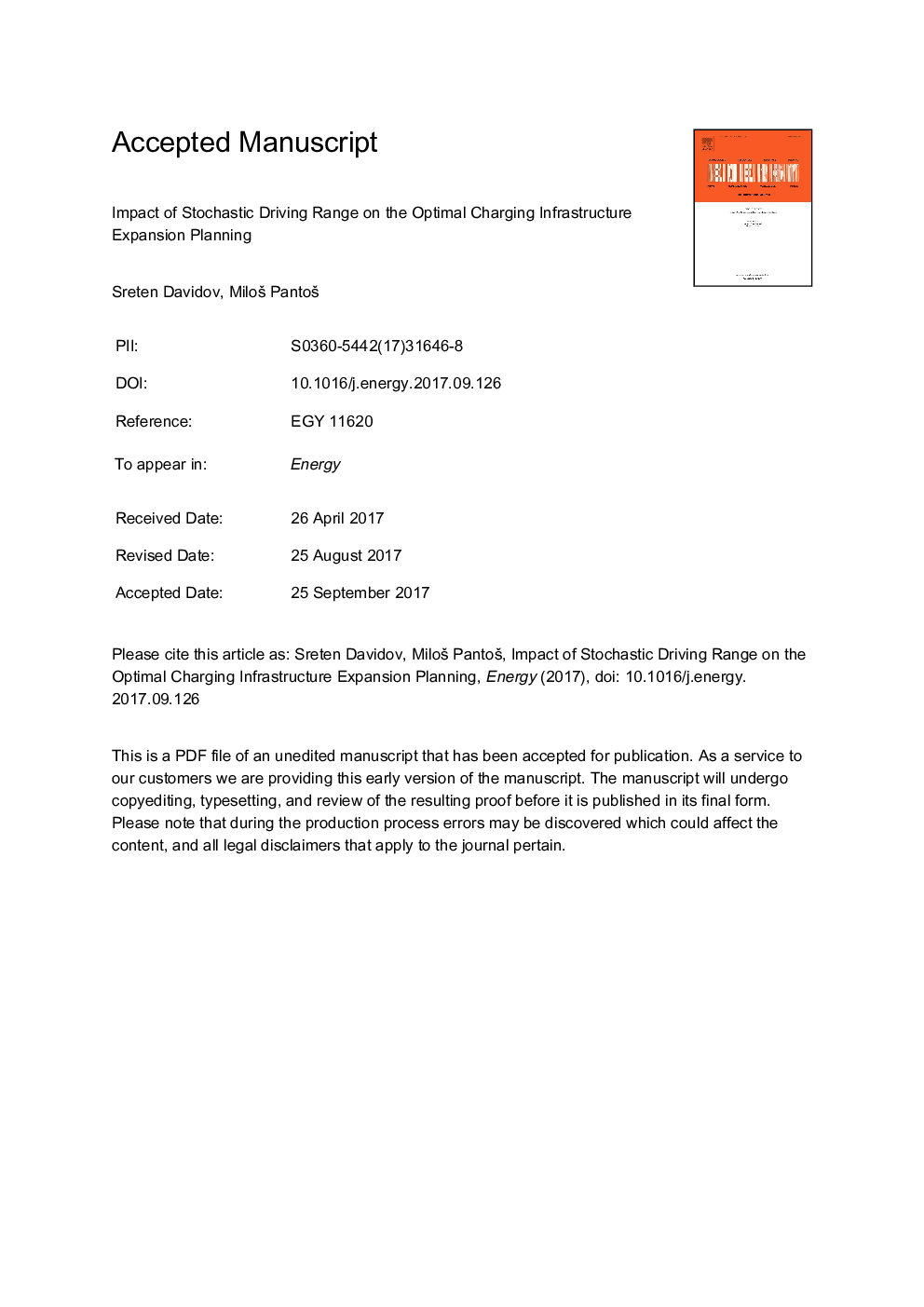| Article ID | Journal | Published Year | Pages | File Type |
|---|---|---|---|---|
| 8072647 | Energy | 2017 | 20 Pages |
Abstract
This paper presents the impact of the stochastic electric-drive vehicles' driving range on the charging reliability of charging infrastructure. For this purpose, it incorporates an additional uncertainty distance in addition to the initial driving range of the electric vehicle to address all probabilistic occurrences that can affect the range, such as the battery charge level, driving style and mobility behaviour, road configuration, air-conditioning, etc. The analysis is performed based on the proposed optimisation model on a test road network applied for different stochastic driving range scenarios, Quality of Service, electric vehicles' trajectories and the types of charging technologies. In general, a dependency is observed where a shorter uncertainty distance increases the number of candidate locations included in the charging reliability criterion resulting in higher overall charging infrastructure placement costs and vice-versa. By becoming familiar with the uncertainty distance impact and its probability of occurrence, charging infrastructure planners could decide in which optimal solution they would invest to both perceive beneficial gains and engage unlimited mobility for electric vehicle users. Above all, planners can use the model as a foundation for future investment incentives in technological development or easier decision making for the adoption of the final charging infrastructure expansion plan.
Keywords
Related Topics
Physical Sciences and Engineering
Energy
Energy (General)
Authors
Sreten Davidov, Miloš Pantoš,
